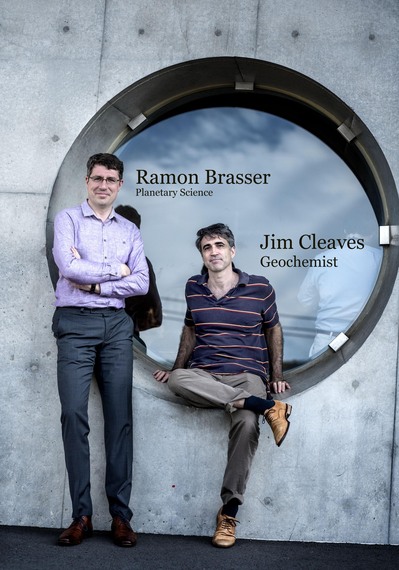Event
ELSI Hosts International Puzzles and Solutions in Astrobiology Meeting
By Jim Cleaves, the Earth-Life Science Institute
This May 14th-18th, a workshop named"Puzzles and Solutions in Astrobiology" was held at Tokyo Tech's Earth-Life Science Institute (ELSI). The organizers invited scientists from around the world from a broad range of research fields, including chemistry, biology, geology, astronomy and planetary science. Astrobiology is a new field that studies the origin, distribution and future of life in the Universe. It remains fundamentally unknown how life began on Earth or whether there is life beyond Earth in the cosmos, and there are many large unsolved problems remaining in astrobiology. The aim of this meeting was to bring diverse scientists together to highlight what they see as the biggest unsolved problems in these areas and propose possible solutions to them.
The topics covered in the meeting were broad, reflecting the diverse perspectives of the large number of fields astrobiology encompasses. Sessions focused on topics ranging from the origin of the Earth and the search for Earth-like planets beyond our solar system, to the chemical and planetary evolution that may have led to the formation of the first living organisms, to the evolution that subsequently led to the diversity of life observed on Earth today.
As an example, the importance of plate tectonics and the emergence of land for the origin of life was discussed. Plate tectonics is the process by which heat from the interior of the Earth is released, something like "sweating" for the planet. Heat is generated in the interior of the Earth by various processes including radioactive decay of elements the Earth received as it formed, and this heat works its way to the surface of the Earth, largely being released when mantle rocks get extruded below the ocean along what are known as mid-ocean ridges. Mid-ocean ridges are places where new rock materials are delivered from the Earth's interior and then are cooled by interaction with the ocean. Many complex chemical and physical changes happen when these rocks come into contact with the ocean. These new cooled rocks get moved away from the mid-ocean ridges very slowly (at a pace of a few cm per year) and ultimately get returned to the Earth's interior near the continental edges. This process is part of the reason Japan has so many earthquakes and volcanoes, since Japan is situated along points where rocks get returned to the Earth's interior. Through these processes, the newly created rocks from Earth's interior supply important nutrients (such as phosphorus) that sustain life. It is not clear when these processes first started making land that was above the surface of the ocean, and such land may be important for the origins of life as several models depend on wetting and drying cycles, such as what occurs when dew forms at night then dries out during the day. Such processes might have been important as they provide a way for the environment to sort and concentrate chemicals, which could allow for new types of reactions.
Other talks focused on the evolution of ocean chemistry. The modern oceans are remarkably similar in their chemistry from the poles to the tropics and from the surface to the bottom of the ocean, since they get mixed by winds and ocean currents. Nevertheless, it is clear that the chemical composition of the ocean has changed over time. The composition of the ocean may have affected the evolution of primitive and modern life forms. There are two large changes in the way the Earth functions as a system that likely had huge impacts on biological evolution. First, at some point modern plate tectonics, as described above, began. Second, at some point photosynthesis, the process by which organisms use light to make chemical energy and oxygen as a by-product became globally common and happened faster than plate tectonics could take the excess oxygen back down into the mantle. When this happened life suddenly changed the entire global environment, and this point marked a significant event: when biology began to control the evolution of Earth's surface, including ocean and atmosphere chemistry.
Presentations by planetary scientists also highlighted issues such as the "Small Mars Problem." Our solar system has a small Earth-like planet (Mars) between Earth and the larger outer planets (such as Jupiter and Saturn). It is very difficult for planetary scientists to understand how this happened. Most models for the origin of the solar system that are capable of making an Earth-like planet at its orbital distance, can't make a Mars-sized planet, too. New studies on the diversity of planets that are being detected beyond our solar system, suggest our solar system may simply be unusual.
From the geobiology side, there was a discussion on "Biosignatures," which are phenomena (such as fossils, chemical or chemical isotopes) that provide evidence for biology in the geological record. Researchers have found that minerals can make objects which resemble biology in the lab, and microorganisms fossilized in the lab often resemble the types of structures that can be made in the absence of biology. It was generally agreed that much more study needs to be conducted to be able to differentiate true biosignatures from false ones.
Overall, it was a highly productive meeting, and follow-on meetings are planned in Pune, India and Danang, Vietnam for 2019 and 2020.













